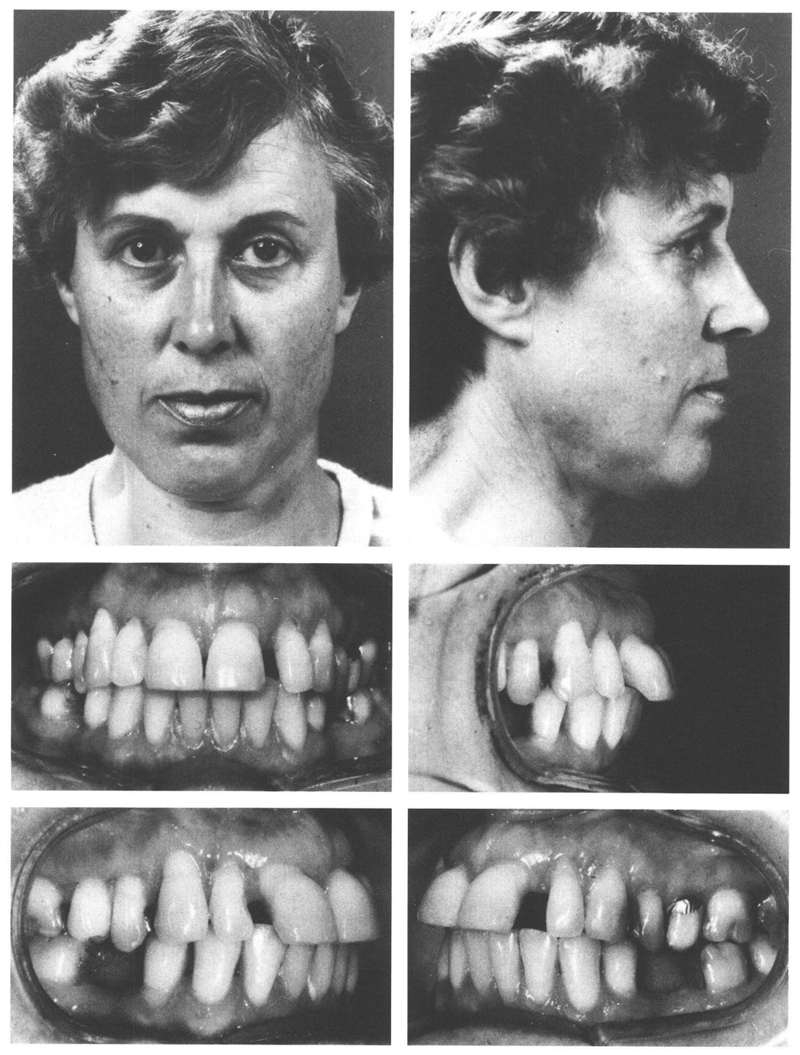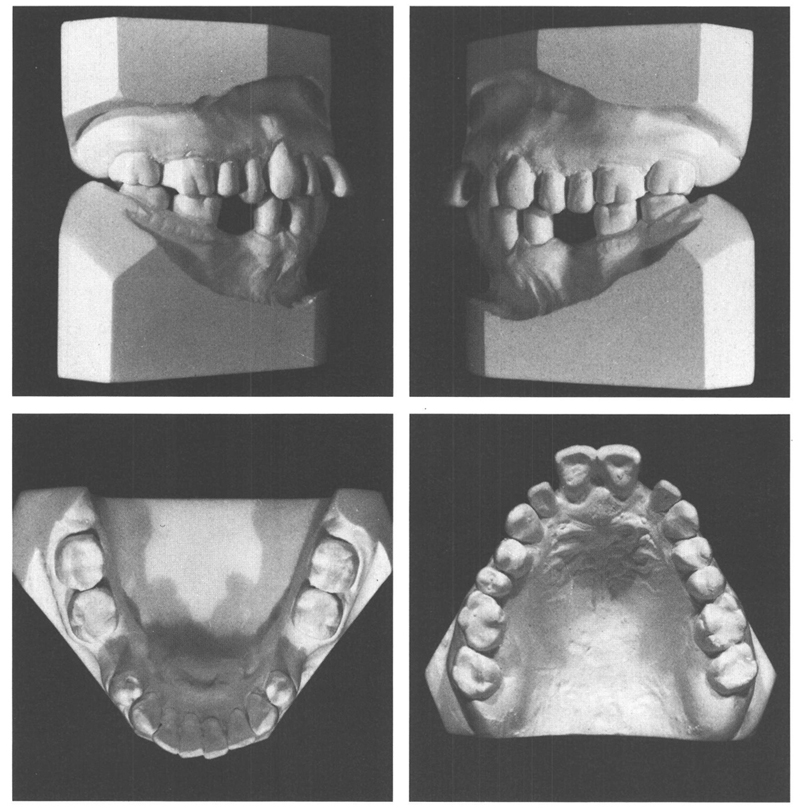Class I, everted 11 and 21, too narrow 12 and 22
Brackets 12, 11, 21 and 22, bands 16 and 26, maxillary removable retainer
Female: 49 years, 8 months to 57 years, 8 months
A woman aged 49 years, 8 months asked if it might be possible to do something about the alignment of her incisors. She had a harmonious face but the eversion of the maxillary central incisors and the large spaces distal to the centrals incisors offended her. The labiopalatal diameter of the maxillary central incisors was excessive and their eversion was largely the result of this. The existence of the spacing was due mainly to a TSD, which indicated a lack of tooth material in the maxillary incisors. The maxillary lateral incisors were narrow; they were even narrower than the corresponding mandibular incisors. The periodontal tissues were in good condition. There were no pockets in the incisor regions. In the posterior segments a few pockets not exceeding 4 mm in depth were found (Figs 40.1 and 40.2).


Figs 40-1 and 40-2 A woman aged 49 y, 8 mo presented with a pleasant face but with objectionably positioned maxillary incisors. The maxillary central incisors have abnormally thick crowns. The lateral incisors are narrow, which this is mainly responsible for the large diastemata between the central and tlateral incisors. The canines and molars are in neutro-occlusion and due to the lack of opposing mandibular posterior teeth the maxillary second premolar has overerupted somewhat.
It was decided to correct the maxillary incisors and to use a partial fixed edgewise appliance rather than a removable plate. The most important reason for this was that the maxillary incisors would need to be intruded. At the age of 49 years, 10 months, the first permanent molars were banded, the central incisors provided with brackets and a twistflex .0175” archwire inserted. Two months later these incisors were ground down palatally and retracted. Four months later, the palatal surfaces of the central incisors were reduced further and brackets were placed on the lateral incisors with the aim to move them mesially along a .019” × .026” archwire.
At 50 years, 9 months and after a treatment period of nine months, all appliances were removed and a removable plate supplied to retain the situation that had been established. The excess space in the maxillary anteriors now was divided in such a way that similar diastemata existed on either side of the lateral incisors. This was done to provide suitable conditions under which to build up the crowns of the lateral incisors with composite directly after the end of orthodontic treatment (Figs 40.3. and



